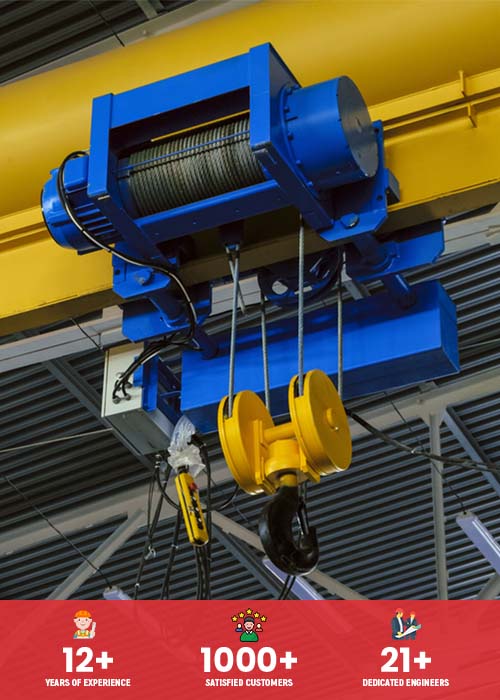Top 5 misuses of hand chain hoists
The hand chain hoist, usually referred to as a chain fall, is one of the most frequently used lifting devices. Modern hand chain hoists from the top hoist crane manufacturers in India are renowned for their adaptability in a variety of industries. They have preserved their toughness and durability while decreasing pulling effort, preventing the operator from overexerting themselves. That does not imply that they are impervious to damage, though. If you don’t employ the proper hand chain hoist operation during a lift, they could easily be harmed.
Hand Chain Hoists are made to require the user to exert as little pulling force as possible, which helps to lessen the strain they feel. Due to their degree of adaptability across a wide range of industries, these hoists are among the most frequently used lifting tools.
A Hand Chain Hoist can be particularly vulnerable to damages if suitable technique is not employed during a raise. The most typical ways a hand chain hoist is mishandled will be covered in depth in this blog post.
Common misuses of hand chain hoists
Overloading the hoist
Unsurprisingly, overloading a chain fall is the most frequent abuse. Straining hooks, broken loads, and lost productivity are the results of applying too much force to the hook or exceeding the hoist’s working load limit. Stretching a hook renders it useless and irreparable.
Modifying the hoist
Another frequent misuse of hand chain hoists is modifications. In order to make taking up a cargo easier, unskilled operators frequently change the equipment, such as popping off the hoist clasp. Not only is this risky, but modifying a hoist in any way will void the warranty provided by the manufacturer.
Twisting
Serious problems may result if the hoist or chain is allowed to twist. For instance, a twisted or rotating chain could get stuck inside the hoist’s gears or even come loose from the hoist sprocket. Additionally, it can allow the weight or the hoist to come into contact with neighbouring items. When the chain block, also known as a capsized block, flips over, twisted chain may develop on multi-chain blocks.
Pulling the chain too hard
Pulling too hard on the chain is another bad practise. If the chain is pulled too hard, it could entirely rip out of the hoist or come off the sprocket. The chain links may therefore spread or stretch if you pull too firmly. Simply put, let go of your hold.
Two blocking
Another very popular practise is two-blocking, which involves hoisting the chain block into the main portion of the hoist. If you continue the process while the bottom block is in contact with the hoist’s primary component, the hoist may dent or suffer internal damage. Slow and steady wins the race when it comes to hand chain hoists.
Here are some pointers you can use to avoid the mistakes that are made during hand chain hoist operations now that we’ve addressed the most typical ones:
- Without swivelling, pull the hoist steadily.
- Always be mindful of the load limit or capacity of the hoist.
- The equipment must not be altered or modified in any manner.
- Pull with the proper amount of force. Not a race, exactly.
- Remember from where you’re hanging the hoist.




